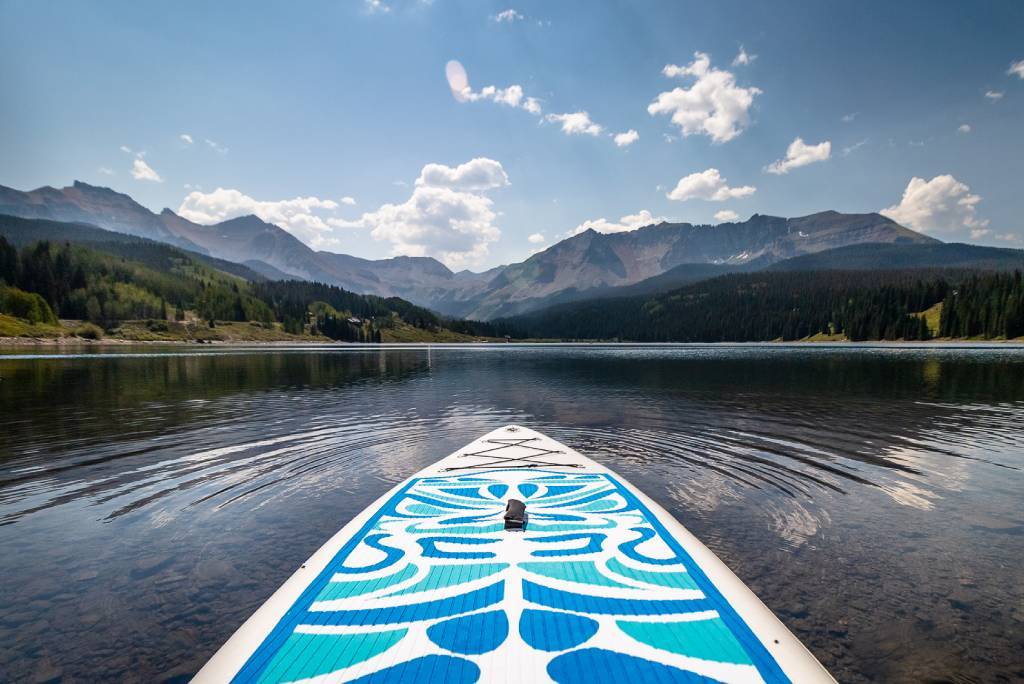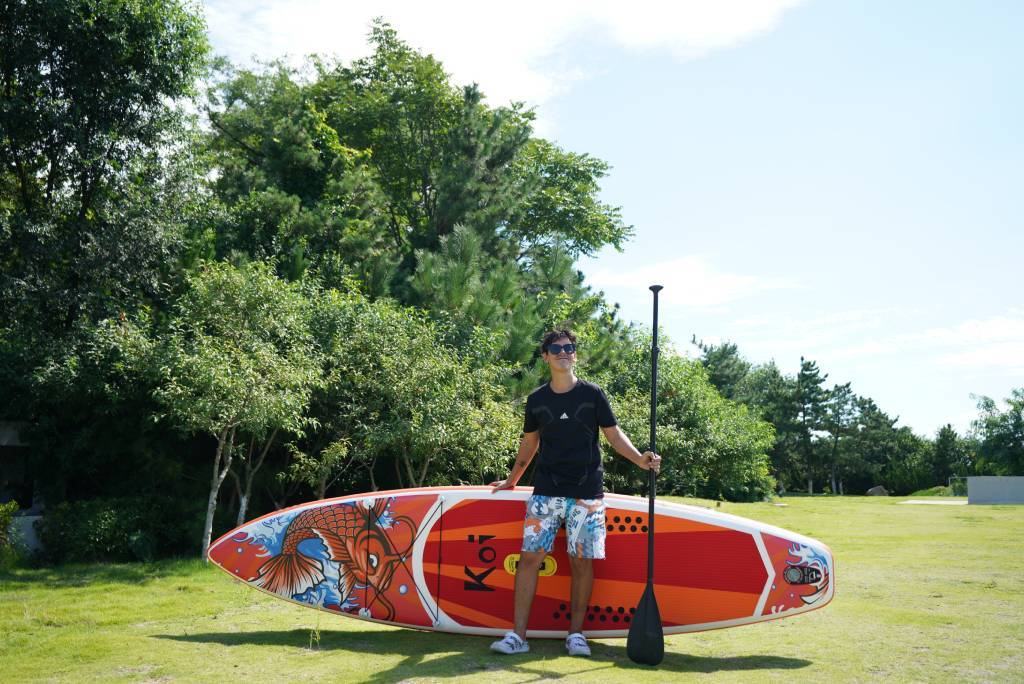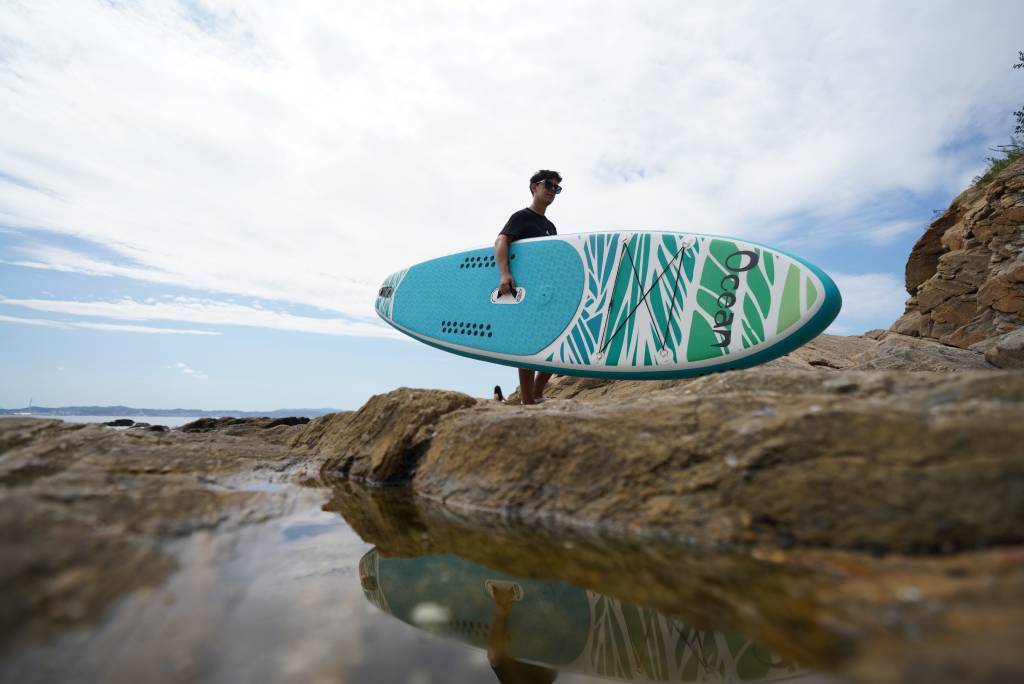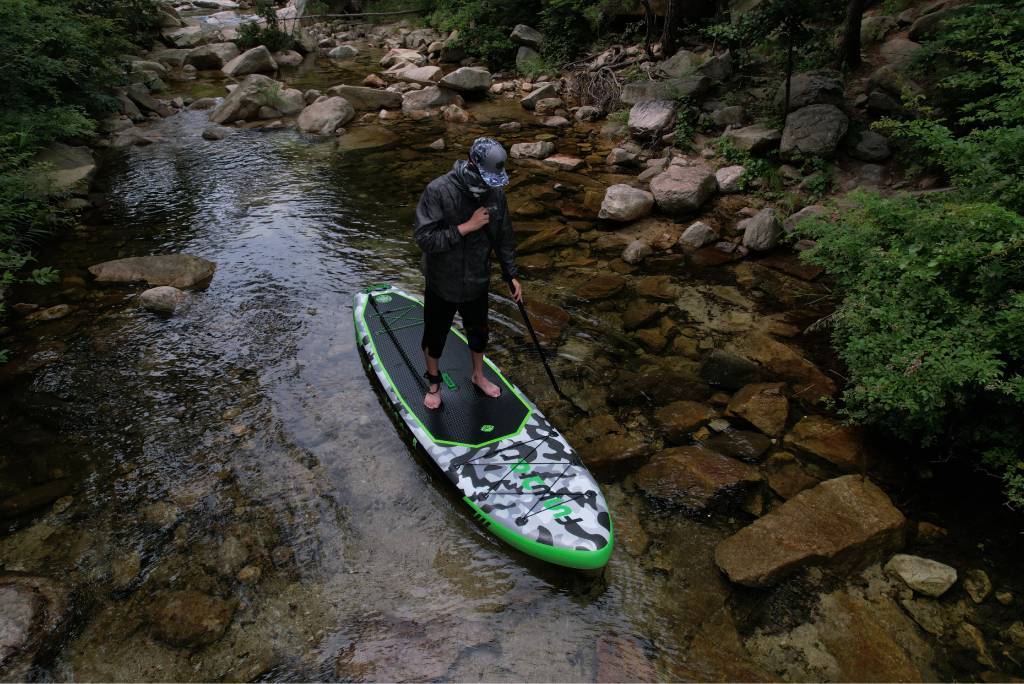To paddle responsibly, always follow Leave No Trace principles, rinse your inflatable paddle board after use, choose reef-safe sunscreen, and support sustainable brands like Funwater.


Eco-Friendly SUP: 7 Simple Ways to Protect the Waters You Love
Whether you’re gliding across a calm Canadian lake or riding gentle coastal waves, paddleboarding brings you closer to nature. But as more paddlers take to the water each summer, protecting these fragile ecosystems is a priority for paddlers.
Luckily, being eco-conscious doesn’t require big changes—it just takes small, mindful habits to make a big difference. Here are 7 simple eco-friendly inflatable paddleboarding tips to help you protect the waters you love.
It sounds simple, but it’s a golden rule: take everything you bring back with you. That includes snack wrappers, water bottles, sunscreen tubes—even damaged gear. If you see trash floating on the water, take action immediately: scoop it up and dispose of it properly once you’re back on shore.
You can also carry a small, reusable, waterproof bag to collect trash while you paddle.

Before paddling in a new lake or river, rinse your inflatable paddle board, paddle, and gear in fresh water—especially if you’ve recently used them elsewhere.
Why? Invasive aquatic species, like zebra mussels or algae, can hitchhike and disrupt entire ecosystems. A quick rinse protects your gear and the environment.

Traditional sunscreens contain chemicals, like oxybenzone, that are harmful to aquatic life. Even if you’re paddling in freshwater, choose a reef-safe, biodegradable sunscreen.
You’ll still get UV protection without leaving any traces of chemicals that harm the water or its wildlife.
Inflatable stand up paddle boards are more eco-friendly when it comes to transporting and storing. They’re lighter, take up less space, and don’t require a roof rack or a gas-guzzling gear trailer. That means less carbon emissions and more flexibility to paddle responsibly wherever and whenever you want.
Plus, blow up paddle boards are made with materials that last for years, reducing waste from frequent replacements.

If you see loons, turtles, fish nests, or otters, enjoy the view, but keep your distance. Getting too close can startle them, disrupt their nesting, or even cause them to abandon their young.
Use your stand up paddle board as a quiet viewing platform. Binoculars or a zoom lens will allow you to get a closer look without causing harm.
Have a small leak or valve problem? Don’t throw your inflatable stand up paddle board away—fix it. Many SUP boards come with a patch kit, and you can find eco-friendly patch products to extend the life of your gear.
The longer your blow up stand up paddle board lasts, the less trash will end up in landfills or oceans.

Look for gear and accessories from brands that focus on sustainability, use recyclable packaging, or support environmental causes. Many SUP paddle board companies, including Funwater, now offer direct-to-consumer delivery, which reduces carbon footprint and avoids unnecessary packaging waste.
Paddleboarding gives us the opportunity to get up close and personal with some of Canada’s most beautiful waterways—from tranquil forested lakes to breathtaking coastal bays. By making a few simple changes, you can help ensure these places remain clean, natural, and livable for generations to come.
Subscribe
Sign up to our newsletter to receive news, reviews, discounts and deals...
Funwater Blogs
Frequently Asked Questions
How can I be eco-friendly when using an inflatable paddle board?
To paddle responsibly, always follow Leave No Trace principles, rinse your inflatable paddle board after use, choose reef-safe sunscreen, and support sustainable brands like Funwater.
Is an inflatable SUP board better for the environment than a hard board?
Yes. An inflatable SUP board is more eco-friendly because it’s lighter, easier to transport, and produces fewer carbon emissions. Blow up paddle boards like those from Funwater also require less packaging and storage space.
What sunscreen is safe to use while paddle boarding in lakes and rivers?
Use a biodegradable, reef-safe sunscreen when paddling your stand up paddle board. Even in freshwater, harsh chemicals from regular sunscreen can harm aquatic life.
How do I prevent invasive species from spreading with my SUP gear?
Rinse your blow up paddle board, paddle, and gear with fresh water before entering a new lake or river. This simple step helps stop the spread of invasive species like zebra mussels.
What should I do if my inflatable paddle board gets damaged?
Don’t toss it—repair it! Most inflatable SUP boards, including Funwater models, come with patch kits. Fixing a small leak is easy, cost-effective, and reduces environmental waste.